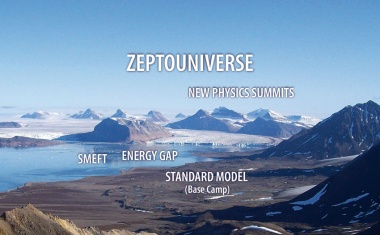 • 9/2020 • Seite 32 • DPG-Mitglieder
• 9/2020 • Seite 32 • DPG-MitgliederExpedition to the Zeptouniverse
Flavour experiments promise insights into energy scales as high as 200 TeV and distances as small as 10−21 meter and offer the chance to identify New Physics.
The Large Hadron Collider (LHC) at CERN will directly probe distance scales as short as 10–19 m, corresponding to energy scales at the level of a few TeV. Presently, higher resolution can only be achieved with the help of quantum fluctuations caused by new particles and new forces that act at very short distance scales and modify the predictions of the Standard Model of particle physics for very rare processes. In this context, weak decays of mesons and leptons play the prominent role besides the transitions between particles and antiparticles in which flavours of quarks and leptons are changed. In this manner, information about the Zeptouniverse corresponding to energy scales as high as 200 TeV or distances as small as 10–21 m can be obtained.
The year 1676 was very important for humanity, because Antoni van Leeuwenhoek discovered the empire of bacteria. He called these small creatures animalcula (small animals). His discovery was a milestone in our civilization for at least two reasons: He discovered creatures invisible to us which have been killing humans for thousands of years, often responsible for millions of deaths in one year. While Antoni van Leeuwenhoek did not know that bacteria could be dangerous for humans, his followers like Louis Pasteur, Robert Koch and other „microbe hunters“ realized the danger coming from these tiny creatures and also developed weapons against this empire [1].
Van Leeuwenhoek was the first human who looked at short distance scales invisible to us and discovered thereby a new underground world. At that time, researchers looked mainly at large distances, discovering new planets and finding laws, such as the Kepler laws which Isaac Newton was able to derive from his mechanics. (...)

